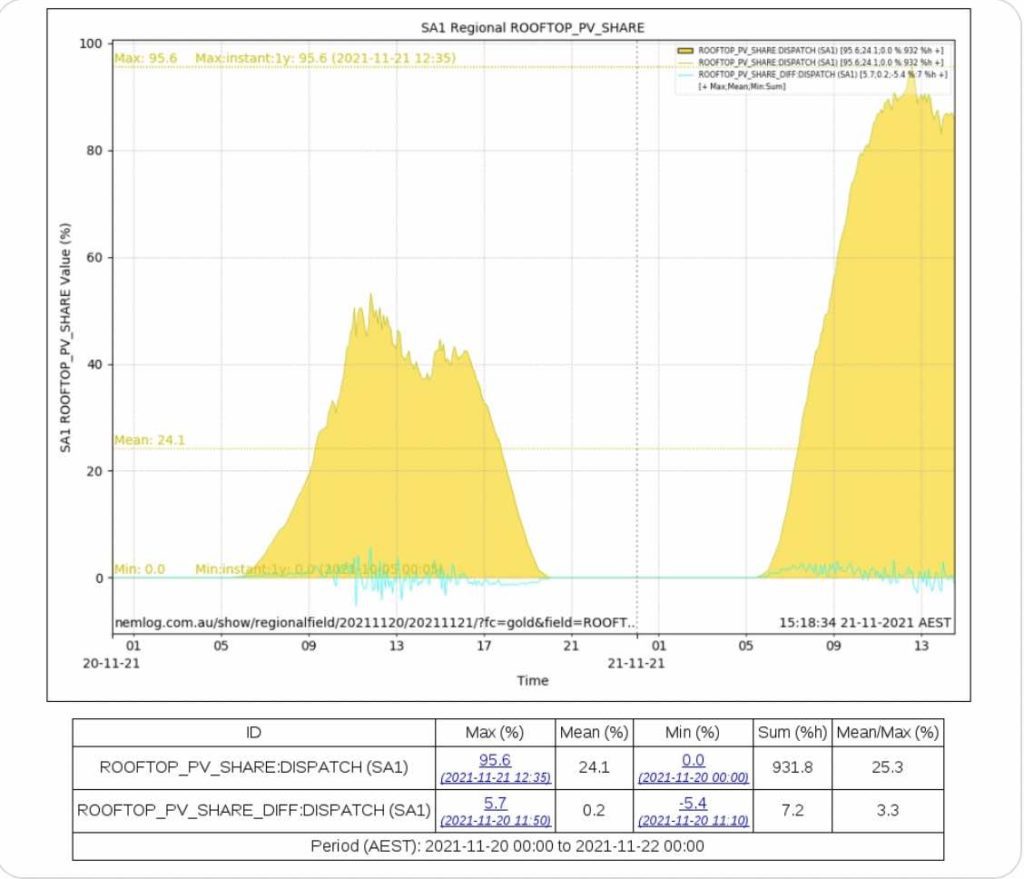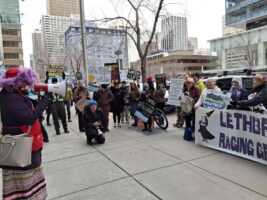South Australia on Sunday became the first gigawatt scale grid in the world to reach zero demand when the combined output of rooftop solar and other small non-scheduled generators exceeded all the local customer load requirements.
The landmark event was observed by several energy analysts, including at Watt Clarity and NEMLog, where Geoff Eldridge noted that a number of measures for South Australia demand notched up record minimums for system normal conditions.
It was later confirmed by the Australian Energy Market Operator, which noted that “scheduled” demand – local demand minus the output of rooftop solar and small unscheduled generators such as small solar farms and bio-energy – fell to minus 38MW in a five minute period at 1235pm (grid time, or AEST).
The fact that South Australia’s demand could fall to zero, and even into negative territory, was flagged as a possibility this spring by the Australian Energy Market Operator, who noted it would be the first gigawatt scale grid to do this and said rooftop solar alone could exceed all local demand.
Minimum demand is now possibly the biggest challenge for market operators like AEMO, because under current market settings it needs to have a certain amount of synchronous generation to maintain system strength and grid stability.
It does this by running a minimum amount of gas generation, and through the recent commissioning of spinning machines called synchronous condensers that do not burn fuel. It also needs a link to a neighbouring grid, in this case Victoria, so it can export surplus production.
South Australia set a new milestone for negative demand in the local distributed network for the first time in late September, and experienced this on five successive Sundays and once for more than four hours in late October.
This latest milestone is different because it includes the transmission network, which has some big mining and industrial loads, such as BHP’s huge Olympic Dam operation, that are connected directly into the transmission network operated by ElectraNet.
AEMO later tweeted this graph above which shows that five-minute scheduled demand used by the NEM dispatch engine went negative for the three dispatch intervals from 1225 to 1240, and reached a minimum of minus 38MW at 1235.
In a statement on Tuesday, AEMO said scheduled demand fell to minus 38 MW and total demand to minus 46 MW, when accounting for interconnector electricity losses. “The NEM performed as expected during this unique event,” AEMO’s head of operations Mike Gatt said.
According to Eldridge, the five minute demand periods went negative again from 13:25 to 13:50 hrs.’
“This minimum surpassed the previous record of 4.89 MW (51.24 MW higher) at 16:25 hrs Wed September 28, 2016 (the day of SA system black event).
“The record today is the result of increasing SA Rooftop PV penetration on a sunny SA spring weekend day where customer loads are on the low end of the demand spectrum,” he said.

Eldridge notes that rooftop solar reached a record 95.6 per cent of total demand at 12.35pm, which is a record share, although AEMO later put the highest share at 92.2 per cent at 12.20.
The previous record share of rooftop solar was 88.3 per cent on October 31. The record maximum output of rooftop solar is 1,301MW, which was reached on Thursday, November 4.
The rest of the supply that pushed scheduled and total demand to below zero was made up of another around 100MW of other small non-scheduled generation, made up of small wind and solar farms.
Sunday’s milestones were just the latest in a series of benchmark achievements for South Australia, which already leads the world in the percentage of wind and solar in its grid.
Wind and solar accounted for more than 62 per cent of local demand in the last 12 months, despite occasionally heavy curtailment because of the limits of a grid with a connection only to Victoria.
The state government has a target of net 100 per cent renewables by 2030, but should reach that milestone well before then, particularly after a new link to NSW is completed in 2025.
AEMO has introduced a range of new measures to cope with the growing share of rooftop solar PV, which is expected to double in size over the next 10 years.
It has introduced a “solar switch-off” mechanism, which it has deployed once so far, but is also looking at smarter and more sophisticated solutions such as creating load through dynamic response of battery storage and appliances to help soak up the excess solar.
(This story has been updated with new data from AEMO).
Lies, myths and greenwashing. Good independent journalism is time-consuming and costly. But small independent media sites like RenewEconomy have been excluded from the tens of millions of dollars being handed out to big media companies from the social media giants. To enable us to continue to hold government and business to account, to cut through the lies and the misinformation about the renewable transition, and to help expand our work on giving broad coverage to the exciting breakthroughs, advances and opportunities of the green energy transition, you can make a voluntary donation here. This will help ensure we can continue to offer the service free of charge and to as wide an audience as possible. Thank you for your support.











